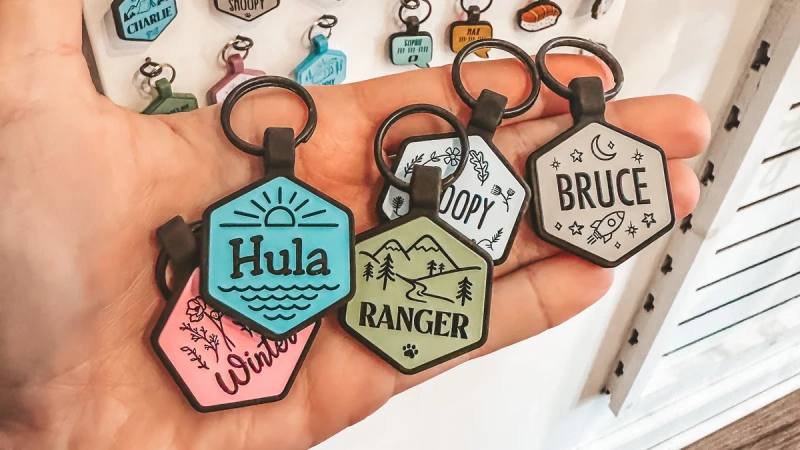Choosing the right harness for a small dog is crucial for both safety and comfort during daily walks. Small dogs have unique needs when it comes to harnesses, and selecting the wrong type can lead to discomfort or potential safety risks. This comprehensive guide will help you understand what makes a great harness for small dogs and explore the top recommendations in the market.
Understanding Why Harnesses Matter for Small Dogs
Harnesses offer several advantages over traditional collars, especially for small breeds:
- They distribute pressure across the chest and shoulders rather than concentrating it on the neck.
- They reduce the risk of tracheal collapse, a common concern in small breeds.
- They provide better control during walks without causing strain.
- They offer increased safety and prevent escape attempts.
Key Features to Look for in Small Dog Harnesses-
1. Comfort and Padding
- Soft, Breathable Materials: Look for harnesses made from mesh or neoprene to prevent skin irritation.
- Adequate Padding: Padding in the chest and shoulder areas helps distribute pressure evenly.
- Lightweight Construction: Ensures your small dog isn’t weighed down.
2. Adjustability and Fit
- Multiple Adjustment Points: Allows for a customized fit.
- Secure Closures: Prevent accidental release.
- Size Options: Ensure options are suitable for small breed measurements.
- Proper Fit: Should allow two fingers between the harness and your dog’s body.
3. Safety Features
- Reflective Strips: Enhance visibility in low-light conditions.
- Quick-Release Buckles: Useful in emergencies.
- Secure D-Rings: For leash attachment.
- No-Choke Design: Protects the trachea.
4. Ease of Use
- Simple Design: For quick putting on and taking off.
- Step-In or Over-the-Head Options: Based on your dog’s preference.
- Clearly Marked Adjustment Points: For easy fitting.
- Easy-to-Clean Materials: For maintenance convenience.
Top Recommended Harnesses for Small Dogs
1. Joyride Harness 2.0

Features:
- Dual adjustability system.
- No-choke design with custom name tag.
- Comfortable padding throughout.
Best for: Small dogs needing a versatile, personalized harness with superior comfort.
2. Ruffwear Hi & Light Harness

Features:
- Lightweight adventure-ready design.
- Debris-resistant liner.
- Reflective trim for visibility.
Best for: Active small dogs who enjoy outdoor activities.
3. Gooby Escape Free Easy Fit Harness

Features:
- Patented escape-free function.
- Soft neoprene material.
- Step-in design.
Best for: Small dogs known for escaping traditional harnesses.
4. Pawaii Small Dog Harness

Features:
- No-choke vest design with ID tag attachment.
- Adjustable padded construction.
- Fashion-forward styling with safety features.
Best for: Style-conscious owners who prioritize both aesthetics and safety.
5. PetSafe 3-in-1 No Pull Dog Harness

Features:
- Front D-ring clip for pull control.
- Reflective straps for visibility.
- Multiple adjustment points.
Best for: Small dogs who tend to pull during walks.
6. Voyager Step-In Air Dog Harness

Features:
- Breathable mesh fabric construction.
- Simple step-in design with Velcro closure.
- Budget-friendly without compromising quality.
Best for: Everyday use and owners seeking value for money.
How to Measure Your Small Dog for the Perfect Fit
Accurate measurements are crucial for finding the right harness size. Follow these steps:
Chest Measurement
- Wrap measuring tape around the widest part of your dog’s chest.
- Add 2 inches for comfort.
- Record the measurement in inches.
Neck Measurement
- Measure around the base of the neck.
- Ensure measuring tape isn’t too tight.
- Add 1 inch for comfort.
Length Measurement
- Measure from base of neck to base of tail to determine appropriate harness style.
Tips for Choosing the Right Harness
Consider Your Dog’s Specific Needs:
- Pulling Behavior: Choose front-clip options for better control.
- Anxiety Levels: Select easy-to-put-on designs.
- Activity Level: Pick lightweight options for active dogs.
- Coat Type: Consider designs that won’t mat long fur.
Common Fitting Issues to Avoid:
- Too Tight: Can restrict breathing and movement.
- Too Loose: Risk of escape.
- Chafing Points: Watch for signs of rubbing under arms.
- Improper Placement: Ensure chest strap sits on breastbone, not throat.
Maintenance and Care
To extend your harness’s lifespan:
- Clean regularly according to manufacturer instructions.
- Check for wear and tear before each use.
- Replace damaged hardware immediately.
- Store in a dry place when not in use.
Making the Final Decision
When selecting a harness, prioritize:
- Safety features appropriate for your dog’s size.
- Comfort and proper fit.
- Ease of use for both owner and dog.
- Durability and quality of materials.
- Value for money considering long-term use.
Professional Customization Options
For businesses seeking wholesale or custom options, consider:
- Bulk ordering opportunities through Wedogy, your trusted partner in pet products manufacturing in Guangdong, China.
- Custom branding possibilities tailored to your specifications, including color variations and material choices suitable for different climates.
The Importance of Testing
Before committing to a particular harness:
- Test the fit in-store if possible or check return policies when purchasing online.
- Monitor your dog’s comfort during initial uses and adjust fit as needed based on observation.
FAQ
Q1: How do I know what size harness to get my small dog?
A1: Measure your dog’s chest, neck, and length as described in the “How to Measure Your Small Dog” section to find the right size harness that fits comfortably without being too tight or loose.
Q2: Can I use a harness if my dog pulls on walks?
A2: Yes! Consider using a no-pull harness with a front clip that helps discourage pulling by redirecting their movement, making walks more manageable.
Q3: Is it safe to leave my dog’s harness on all day?
A3: While some harnesses are designed for all-day wear, it’s best to remove it during unsupervised time or when your dog is resting to prevent chafing or discomfort.
Q4: How often should I clean my dog’s harness?
A4: Clean your dog’s harness regularly according to manufacturer instructions, especially after outdoor activities or if it gets dirty from everyday wear.
Q5: What should I do if my dog seems uncomfortable in their new harness?
A5: Check the fit to ensure it’s not too tight or loose, adjust as needed, and observe how your dog reacts while wearing it. If discomfort persists, consider trying a different style or size.
Conclusion
Selecting the right harness for your small dog is a crucial decision that impacts daily comfort and safety. While there are many excellent options available, the best choice depends on your specific needs and your dog’s characteristics. Consider factors like size, activity level, and behavior when making your selection.
For wholesale inquiries or custom harness solutions, Wedogy offers professional consultation and customization services tailored to meet diverse needs in pet products manufacturing. Contact Wedogy to explore our range of high-quality dog harnesses and other pet products designed specifically for small dogs.



